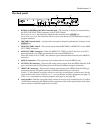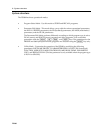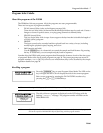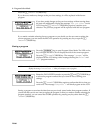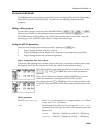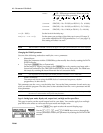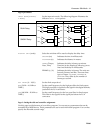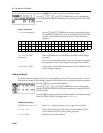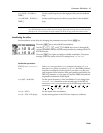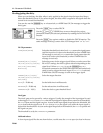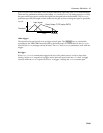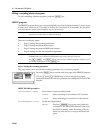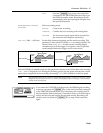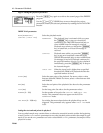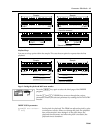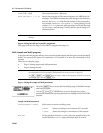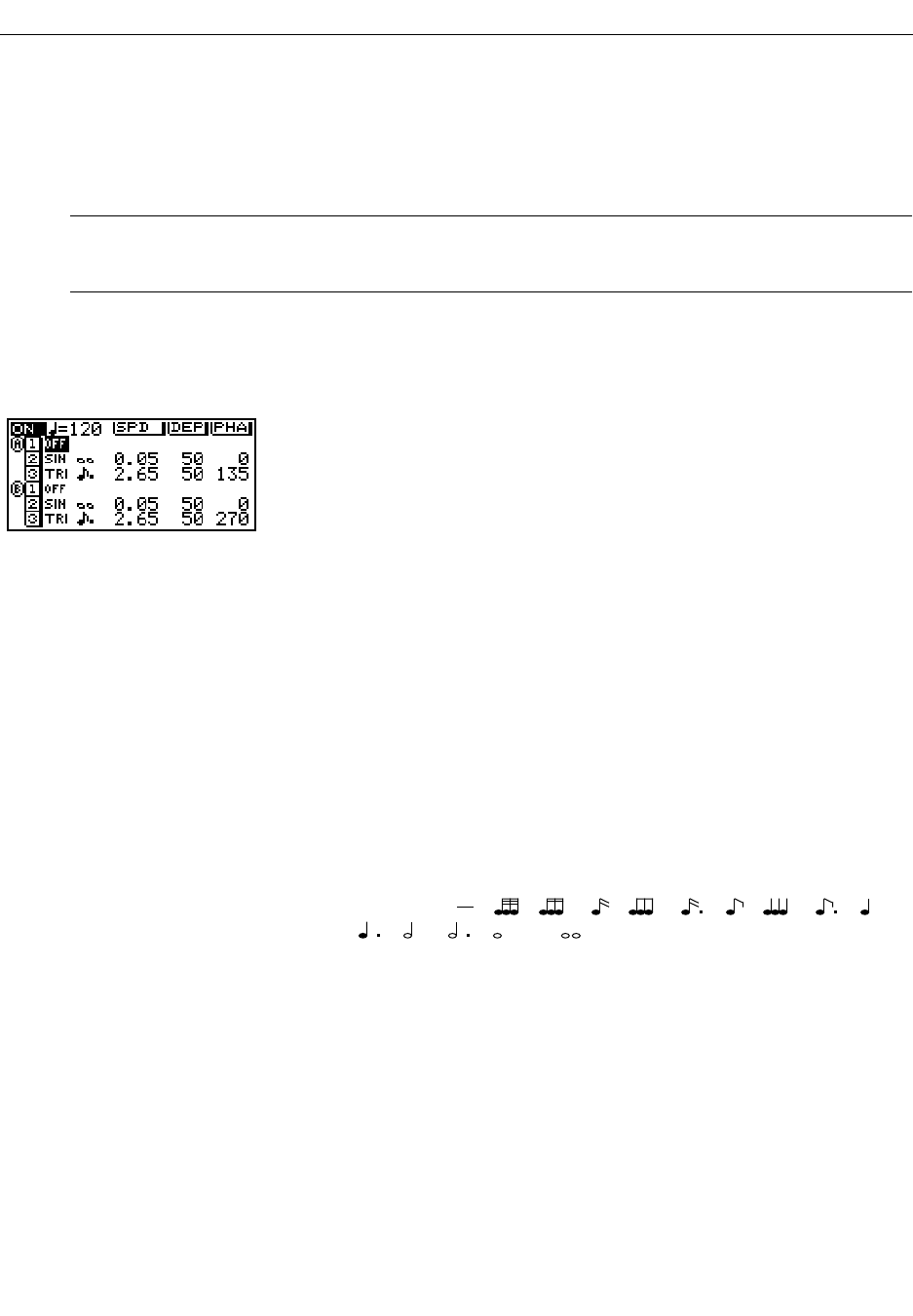
Parameter Edit Mode - 13
D5000
Modulating the delay
Add modulation to the delay by changing the parameters accessed by the [MOD] key.
Modulation parameters
HPF (20 Hz ~ 4.0 kHz or
THRU)
Set the cutoff frequency for the high pass filter for the feedback
loop.
LPF (400 kHz ~ 20 kHz or
THRU)
Set the cutoff frequency for the low pass filter for the feedback
loop.
NOTE
You should ensure the total value of the LVL parameter of each channel for a DUAL delay or all taps
for a SINGLE delay is kept at or below 100. For example, if you have three taps active, set the values for
each tap to 30. You can vary the levels (for example: 50-30-20) as long as the total is 100 or lower.
Press the [ MOD ] key to select MOD (modulation).
Use the [ < ] , [ ^ ] , [ > ] , and [ % ] CURSOR keys to move through the
various parameters. Modify the selected parameter by rotating the DATA
ENTRY encoder.
Press the [ MOD ] key again to enable or disable modulation. The status
message in the top corner of the LCD changes from "ON" to "OFF".
STATUS (OFF/SIN/TRI/
PAN)
Select OFF, sine waveform (SIN), triangle waveform (TRI), or
auto pan (PAN). When you select SIN or TRI, the D5000 performs
frequency modulation on the signal. If you select PAN, the auto
pan program will be effective at the pan position specified by the
DELAY parameter PAN (see page 10), and the D5000 will perform
amplitude modulation on the signal.
SPD (0.05 ~ 40.00 Hz) Set the speed (frequency) of the modulation. If you changed the
DISPLAY UNIT parameter on the second page of the DELAY
function to TEMPO, you can select one of the following for the Note
parameter: , , , , , , , , , ,
, , , , or .
DEP (0 ~ 100%) Set the depth of the modulation.
PHA (0° ~ 350° in 32 steps) Set the starting phase of the LFO (low frequency oscillator).
3 3 3 3



